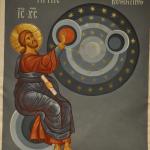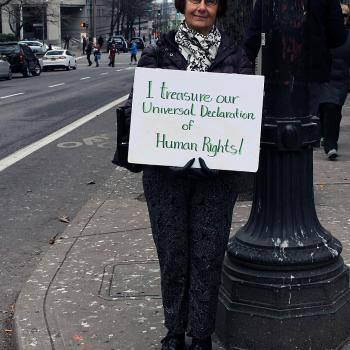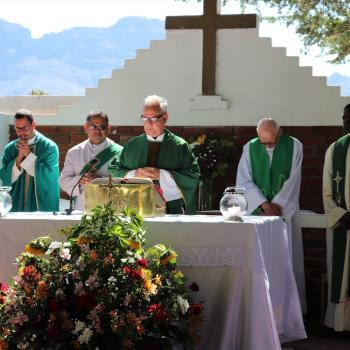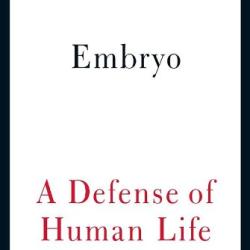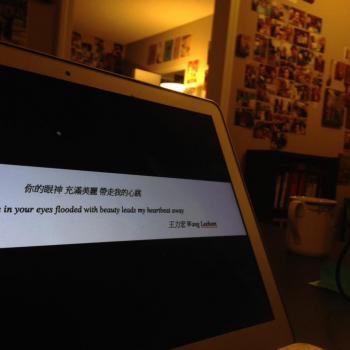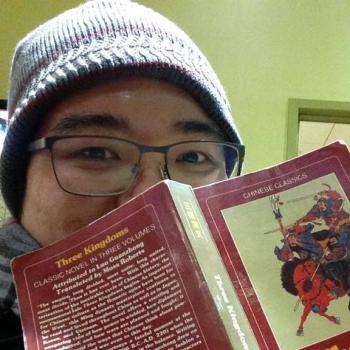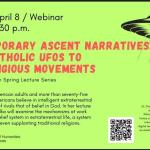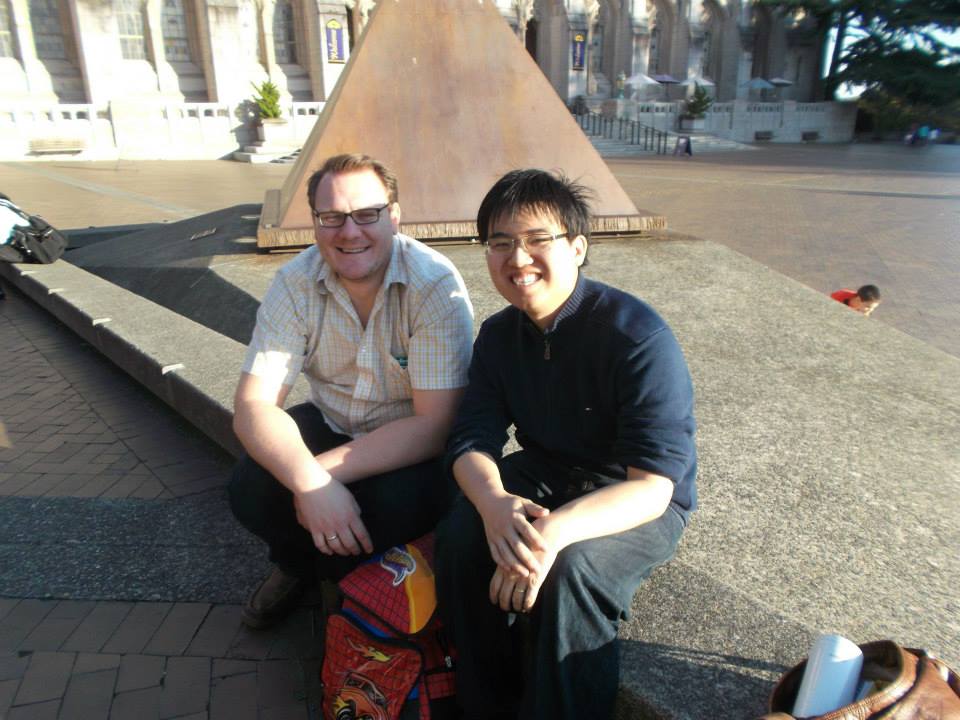
My friend Artur Rosman got a job. I don’t know why so many of us were surprised that he did; maybe it’s because we’re more used to having to defend him when he gets defamed, or maybe (and more likely) it’s because he got one at our collective dream school Notre Dame. He’s the managing editor of Church Life Magazine now. He’s going to do a very good job.
Some of us were a bit dismayed when Artur announced that he’d shut down his blog because he got that job. I, of all people, had had some stake in it; his whole thing about ‘Rabelaisian Catholicism,’ after all, started as a Facebook comment on my timeline.
But then, Artur started writing again, now from his new perch in South Bend. It turns out that it’s the same stuff that got him famous in the first place – the ‘Catholic imagination,’ which he also wrote his dissertation on, as opposed to the ‘Protestant imagination,’ and then the distinction between those two and an ‘Orthodox imagination‘ that he colorfully characterizes as ‘incestuous’ between church and state/ethnos. Even though I am Orthodox-in-communion-with-Rome (or maybe because of it), I was overjoyed.
I promised Artur recently that I’d knock him on his flat characterization of Orthodoxy, but today is not that day. After all, he was pretty nice – even insightful and beautiful – about it in his recent Church Life post:
I will close with an example culled from the writings of Artur Grabowski, a Polish playwright, poet, and essayist. It reflects upon the strangeness and appeal of the Eastern Orthodox tradition to someone at home in the Western Catholic imagination:
A few days later I went into a tiny and dark Greek Orthodox church. There I felt an intense sense of presence. The icons seemed to gaze upon me with his gaze, and on them were the faces of Christ and the saints. Yet he didn’t seem so much to gaze upon me as observe me from on high. I found myself in a subordinate position, lowered (though, alas, not humble) in relation to him. My appointed place is under his icon. Perhaps my lack of humility comes from my particularly Latin pride of independence, or maybe it’s because I’m used to standing face to face with His image. But this low position, truth be told, gave me a feeling of strength. It is a calling to meet his demands, to change myself under his gaze, but at the same time it discourages me from self-sufficiency. No, I dare not approach him there.[4]
Future posts will concentrate more directly on how cultures of formation shape Catholic imaginations differently than Eastern Orthodox, Protestant, and secular imaginations.
Sure, those of us familiar with Artur’s thoughts on Orthodoxy as inherently ‘altar-and-throne’ sort of know where he is going with this, and it is a little bit weird because at least in my church, I too am used to standing face to face with the icon of Christ on the iconostas as I participate in liturgy. But I have to say that it seems like Artur is mellowing out. The difference, as he has it here, is to be relished; the Latin and the Byzantine traditions – and thus imaginations – are indeed different, as Archimandrite Robert Taft SJ has also pointed out, and it is in our differences that we find our catholicity.
But I want to go a little further than that, as every time Artur writes about the Catholic imagination, my mind goes back to that night where he packed out a pub in Seattle speaking on this. As it happens, Artur and I used to live around the corner from each other in Seattle; he came to my lectures at the University of Washington, and I went to his stuff when he hung out with the Dominicans at Blessed Sacrament Parish and the Catholic Newman Center. One time, Artur told me that he was giving a talk at a bar for an event called Drinks with Dominicans, and he said that he’d give me a ride. I was a little nervous that he’d be drinking and driving, but I reasoned that if he was the speaker, he wouldn’t be able to have much to drink anyway. We went, and I soon discovered that the event doubled as a kind of Catholic dating meat market; it was very crowded. As my wife was not able to attend, I played with my wedding ring all night.
For me, that scene is all Artur – the camaraderie, the just-tipsy-enoughness, the mess of disorganized flirting and awkward claustrophobia going on around us. There is a materiality to it – the food, the drink, the car without which we wouldn’t have been able to get to the pub. You could say that my friendship with Artur is founded on food; there used to be an Indian buffet within walking distance of our apartments until it became a victim of Seattle gentrification that was all-you-can-eat for $7.99, and that is where our families went all the time. When I moved in to Seattle, Artur came with a dolly and wheeled stuff in; before that, my wife and I had come down to Seattle to do some apartment hunting, and Artur walked us around the entire neighbourhood with his kids to scout it out. My first taste of whisky – Jameson, if you must know – was at his house; if you must also know, I thought it was nasty. When he had a birthday party, we all watched The Big Lebowski together. He served Bulleit Bourbon that time; I liked that a lot more.
If you were to ask me, I’d say that it was through Artur’s friendship, this kind of slightly crazy life-around-the-corner that involves a lot of sharing in food and drink and driving and family and movies and art and life, that I came to understand what the Catholic imagination really is. All of this messy materiality, I came to learn, was Catholicism. From Artur’s reading of David Tracy and Andrew Greeley, he always stresses that Catholics have an analogical imagination, that the material order actually corresponds to something of divine grace, and that this is so different from a dialectical sundering of heaven and earth that was much more familiar to me as a Protestant. The Catholic imagination is so much more than the way you think; it is the way you are and therefore live. It’s sort of like when the Theotokos of Belz-Częstochowa first looked me in the eye and I was undone; I remember either tweeting or posting somewhere that I finally understood why the Holy Pope John Paul II kept saying totus tuus ego sum, and Artur liked it. Everything, it turns out, is suspended in the supernatural zone between nature and grace.
I wonder, then, whether this is simply a Latin version of Catholicism, or whether it’s Catholic, period. Today, for example, we on the New Calendar celebrate the placing of the sash of the Theotokos in Calcoprateia; it is a belt that was said to have healing properties, as discovered by the emperor of New-Rome and his queen. Artur, of course, would say that this is exactly the gotcha moment; did you say ’emperor’? I can already hear him troll. But this, I’d submit, is not really the point (at least not the whole thing – oh come on, gimme a break); it is that the supernatural infusion of the sash’s materiality speaks to the infusion of all creation with the Lord’s grace. This is, after all, one of the justifications for the use of icons: it is that the material order can indeed communicate the love of Christ to his people. We are Catholic because we are located in this universal economy of grace; our imagination of divine communication is true because it is in the everyday life of the real world that we receive the presence of the Lord.
Artur writes that ‘the Catholic theological imagination abhors the confusion of a systematic vacuum,’ but that there is also the ‘good news is that there is no lack of literature that could help these institutions fashion a unifying vision of the Catholic imagination while making allowance for Catholicism’s characteristic diversity.’ I look forward to his work as he does that, but I wonder whether there is something unsystematic about the whole thing too, what he characterizes even as ‘confusion’ when different artists and authors struggle to articulate what the Catholic imagination actually is. But maybe that kind of thing is the stuff that goes beyond writing. It’s to be found in the material of friendship, the closeness of family, the delight of food and drink, maybe even the theology of the body.


